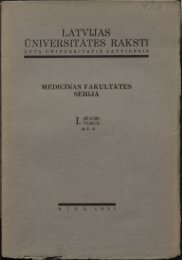You also want an ePaper? Increase the reach of your titles
YUMPU automatically turns print PDFs into web optimized ePapers that Google loves.
developed into Negidal and Oroche j ( English y), c. g.: Manchu<br />
morin, Oroche moji, Negidal mojin a horse; Manchu orin, Oroche oji,<br />
Negidal ojin twenty; Manchu beri, Oroche and Negidal böji an arrow;<br />
Tungus and Manchu bira, Oroche bijaka, Negidal bijaxan a river.<br />
The advancement of the Goldis and Olchas, the nearest relatives of<br />
the more civilized Manchus, is quite natural and there is no doubt<br />
that they have absorbed some Tungus, Oroche and Gilyak tribes.<br />
Goldi is still now-a-days the international language<br />
different local peoples of the lower Amoor basin.<br />
between the<br />
The influence of the western culture on the Negidals is characte-<br />
rized by the following loan-words: dausun salt, boso linen, boga<br />
heaven and god, bitxö a book, ajaki spirits, tumö ten thousand.<br />
Chinese words have reached the Negidals only through<br />
of the Manchus, c. g.: džangin a superior, bögin<br />
master, tungse<br />
the mediation<br />
a host, pakčin a<br />
an interpreter, gan steel, geda a lance, čeu a shovel,<br />
döngsö a balance, josoloxöl a key, pöngsöku a jar, daji<br />
the tea, sjata the sugar. The driving dog (enakin)<br />
(ala), sledge (tolgoki) and stopper (kauri)<br />
a pipe, čai<br />
with his harness<br />
are typical objects of the<br />
Palaeo-Asiatic culture. To the same origin seem to belong<br />
the names<br />
of some northern animals as: the reindeer (ojon), the elk (toki), the<br />
squirrel (oļuki), the swan (huksi) and the goose (ņungnaki). Likewise<br />
some primitive utensils may be Palaeo-Asiatic, e. g.: čabgi<br />
džabgo a harpoon, kambo a spoon, longo<br />
a bore,<br />
an anchor,<br />
luxi an arrow. The<br />
Gilyak tux and Yenisei-Ostiak tuk, an axe, are probably older forms<br />
than the corresponding Negidal suxö, Manchu suxe, Mongolian siixe,<br />
but it is doubtful, if the Altaic peoples<br />
with their old metallic culture<br />
borrowed axes from the Palaeo-Asians, who even now have not yet<br />
entirely abandoned the stone age.<br />
The Negidal vocabulary gives us many<br />
new materials for the<br />
etymologic study of the Altaic languages. The Manchu verb gabtambi,<br />
to shoot with a bow, seems to be changed by metathesis,<br />
while the<br />
Negidal gatpani has preserved the old form, from which we may<br />
explain the Tungus garpam, Goldi garpai, Oroche hapai<br />
and Mon-<br />
golian xarbuxu. The consonant gin the Mongolian numeral nigen,<br />
one,<br />
is developed from ng, which we find in Okhotsk Tungus ņongon<br />
(Negidal ņogu), the first. To the same root belongs probably the<br />
Manchu word ningu, the top, from which seems to be derived also the<br />
later numeral "six" (Manchu ningun, Tungus, Negidal<br />
and Goldi<br />
ņungun) as the next higher number over the former five. The Negidal<br />
word sögöb, a sable, is regularly shortened to söp,<br />
5<br />
in the same way


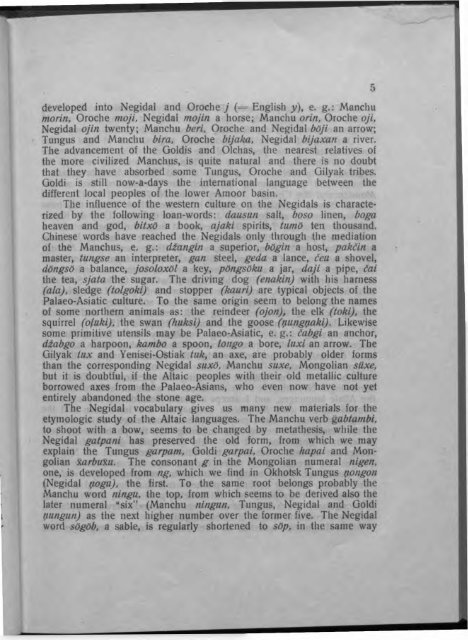
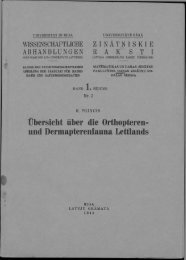
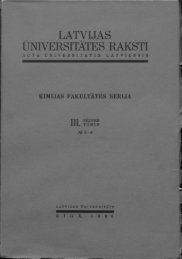
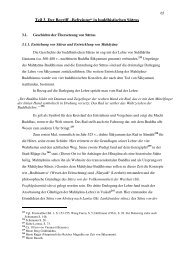
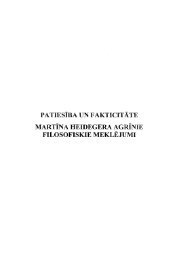
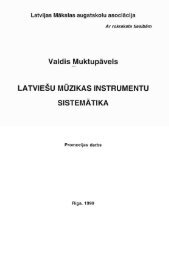
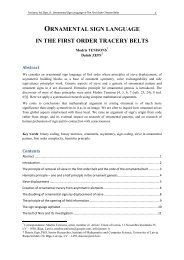
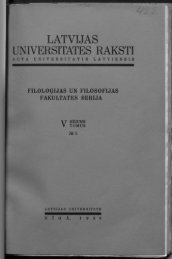


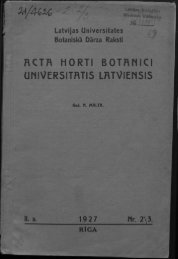
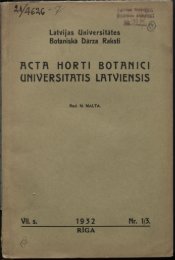
![LATVIJAS] - DSpace](https://img.yumpu.com/11778577/1/190x249/latvijas-dspace.jpg?quality=85)
